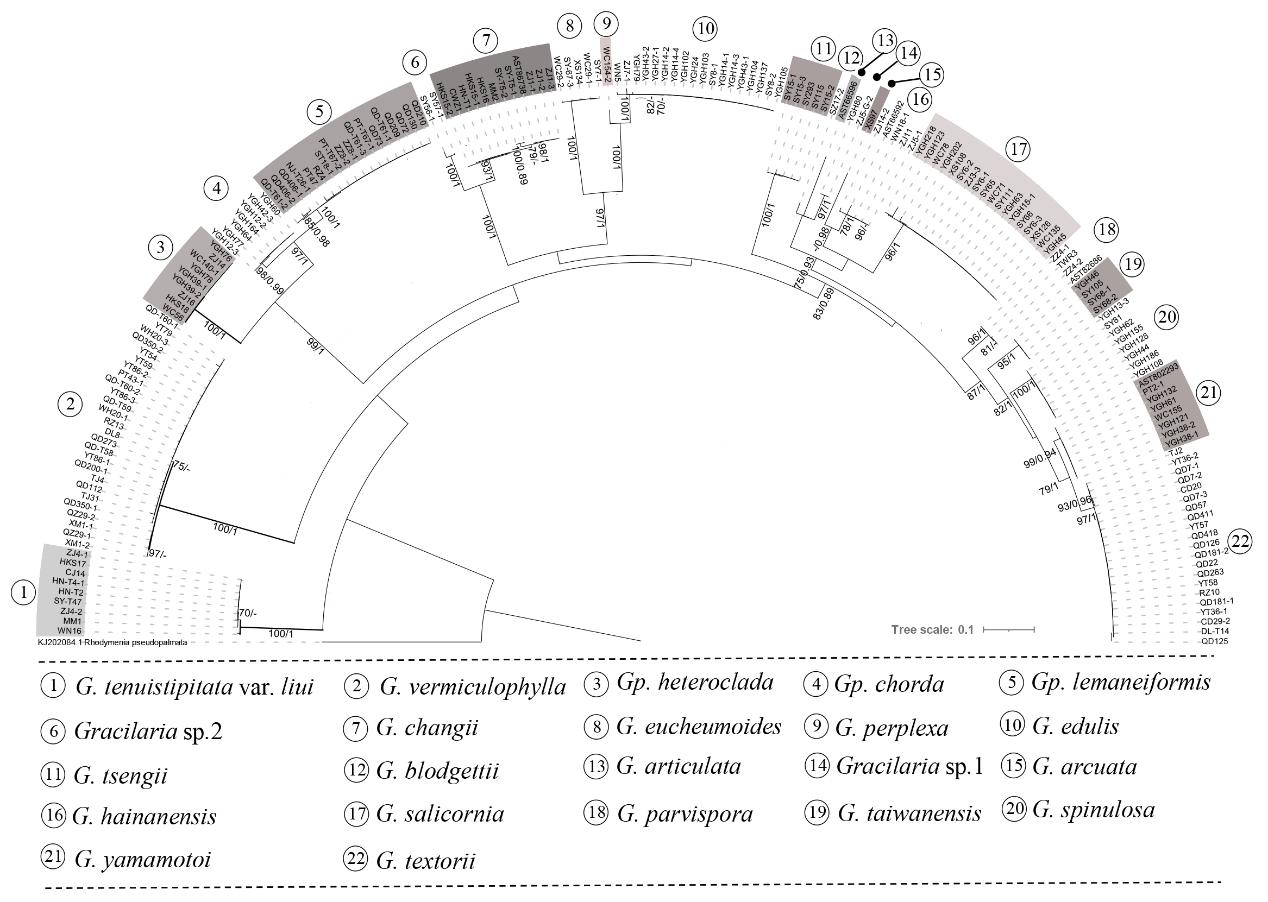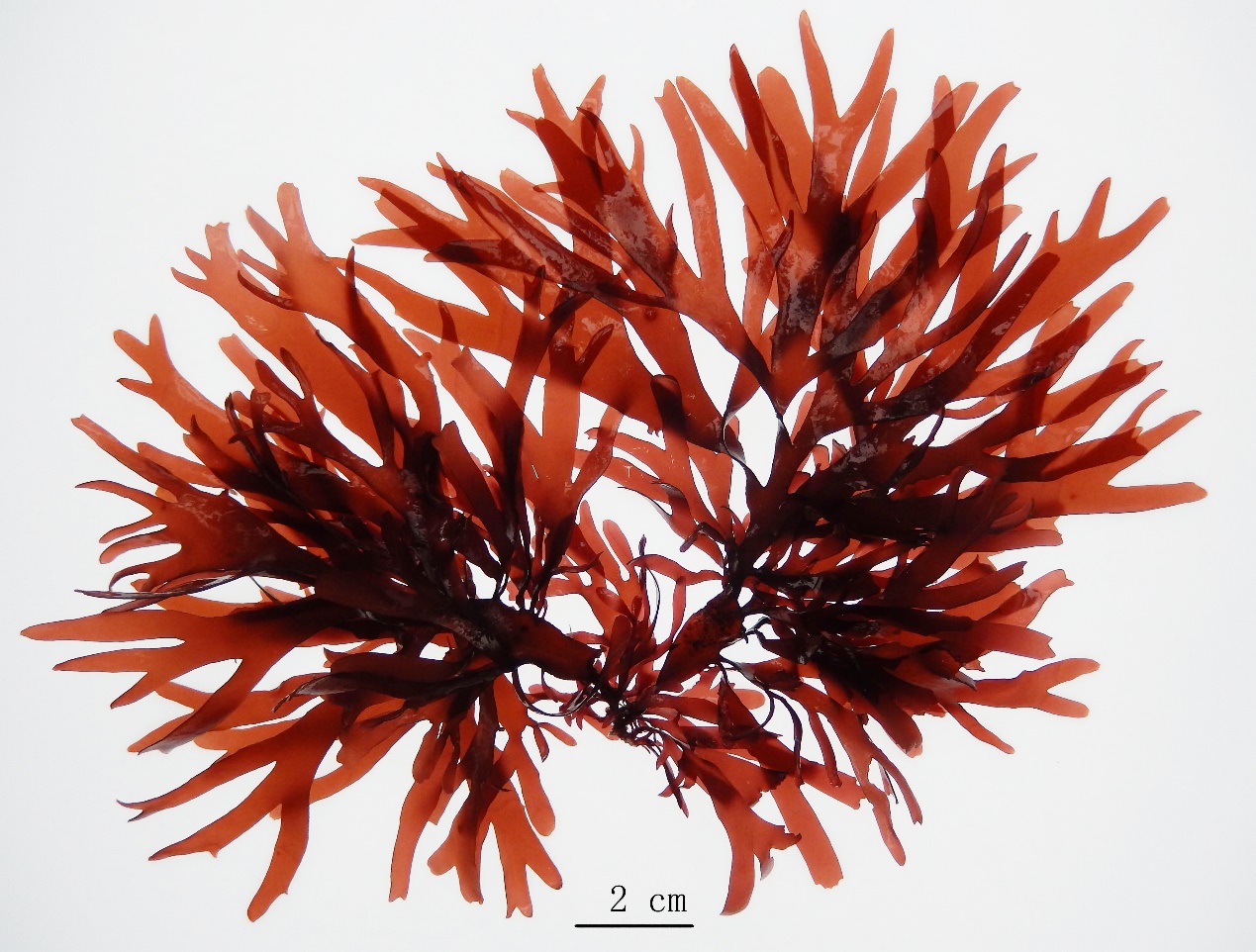Integrative Morphological and Molecular Assessment Reveals Diversity of Gracilariaceae in China
Gracilariaceae are economically and ecologically important red algae worldwide used to produce agar. Chinese coast is a hotspot for type specimens of Gracilariaceae species and is ideal for the study of Gracilariaceae species diversity. Although Gracilariaceae diversity in China has been well studied with morphological studies, molecular phylogenetic studies are rare in China.
Recently, the research team led by Prof. WANG Guangce from IOCAS reported the diversity of Gracilariaceae by integrating morphological and molecular evidence.
The study was published in Algal Research on Mar. 25.
Researchers collected 211 fresh specimens along the entire Chinese coast including the Xisha Islands during 2013-2022, and newly produced 355 rbcL/COI gene sequences. Based on the DNA sequence database, researchers constructed Maximum likelihood and Bayesian inference trees, showing 22 Gracilariaceae species. Simultaneously, this study also revealed the phylogenetic relationships between Chinese Gracilariaceae species and global taxa, which constitute a gap in several inner Gracilariales lineages compared with previous studies.
More importantly, researchers discovered a novel Gracilaria species from Hainan Island, and presented a formal proposal of the new species as Gracilaria tsengii sp. nov. in honour of Prof. Tseng C. K., a Chinese algologist, for his excellent studies on marine algal diversity in China and around the world. Unlike other known Gracilaria species, in which spermatangia are scattered over the thallus of male gametophytes, G. tsengii has spermatangia restricted to nemathecial sori on the terminal branchlets.
"The major novelty here is the new species, especially regarding the morphology of its special spermatangia," said Prof. WANG.
"This is the first Gracilaria species discovered with specialized spermatangial nemathecial sori, which together with the distinct phylogenetic position of the species, further indicates the complexity of the trait evolution of spermatangial reproductive structures in Gracilaria," said WANG Xulei, first author of the study.
This study was supported by the National Key Research and Development Program of China, the National Natural Science Foundation of China, etc.

Fig. 1 Maximum likelihood (ML) tree based on rbcL dataset for the Chinese Gracilariaceae species, showing 19 Graciclara species and three Gracilariopsis species. ML bootstrap values ≥ 70 % and Bayesian inference (BI) posterior probability values ≥ 0.90 shown on branches.

Fig. 2 Habit of Gracilaria textorii, collected from Qingdao, China
Xulei Wang#, Menglin Guo#, Shuheng Yan, Yongqiang Wang, Zhongmin Sun, Bangmei Xia, Guangce Wang*. (2023). Diversity of Gracilariaceae (Rhodophyta) in China: An integrative morphological and molecular assessment including a description of Gracilaria tsengii sp. nov.. Algal Research, 71(2023), 103074.
(Text by WANG Xulei)
Media Contact:
ZHANG Yiyi
Institute of Oceanology
E-mail: zhangyiyi@qdio.ac.cn
(Editor: ZHANG Yiyi)